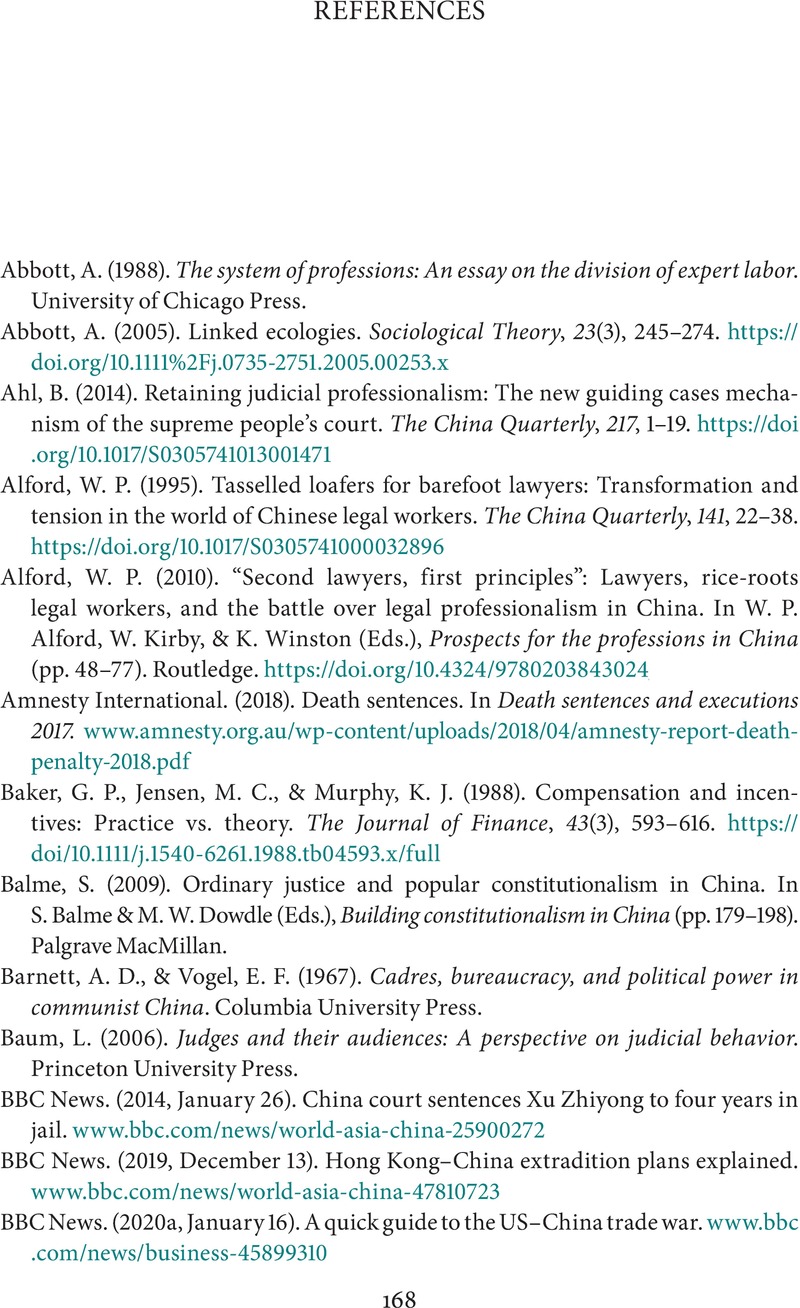Book contents
- Growth and Survival
- Growth and Survival
- Copyright page
- Dedication
- Contents
- Figures
- Tables
- Acknowledgments
- Abbreviations
- 1 Introduction
- 2 An Ecological Theory of Court Reform in Urban China
- 3 The Judicial Cadre Evaluation System
- 4 High-End Demand for Legal Services and Local Pressure to Professionalize the Judiciary
- 5 Expansions in Competitive Promotion and the Implications for Judicial Autonomy
- 6 Court Personnel, Bureaucratic Specialization, and the Limits of Top-Down Theory
- 7 Conclusion
- Appendix Summary of interviews regarding local lawyer salaries (2014)
- References
- Index
- References
References
Published online by Cambridge University Press: 26 May 2022
- Growth and Survival
- Growth and Survival
- Copyright page
- Dedication
- Contents
- Figures
- Tables
- Acknowledgments
- Abbreviations
- 1 Introduction
- 2 An Ecological Theory of Court Reform in Urban China
- 3 The Judicial Cadre Evaluation System
- 4 High-End Demand for Legal Services and Local Pressure to Professionalize the Judiciary
- 5 Expansions in Competitive Promotion and the Implications for Judicial Autonomy
- 6 Court Personnel, Bureaucratic Specialization, and the Limits of Top-Down Theory
- 7 Conclusion
- Appendix Summary of interviews regarding local lawyer salaries (2014)
- References
- Index
- References
Summary

- Type
- Chapter
- Information
- Growth and SurvivalAn Ecological Analysis of Court Reform in Urban China, pp. 168 - 182Publisher: Cambridge University PressPrint publication year: 2022

